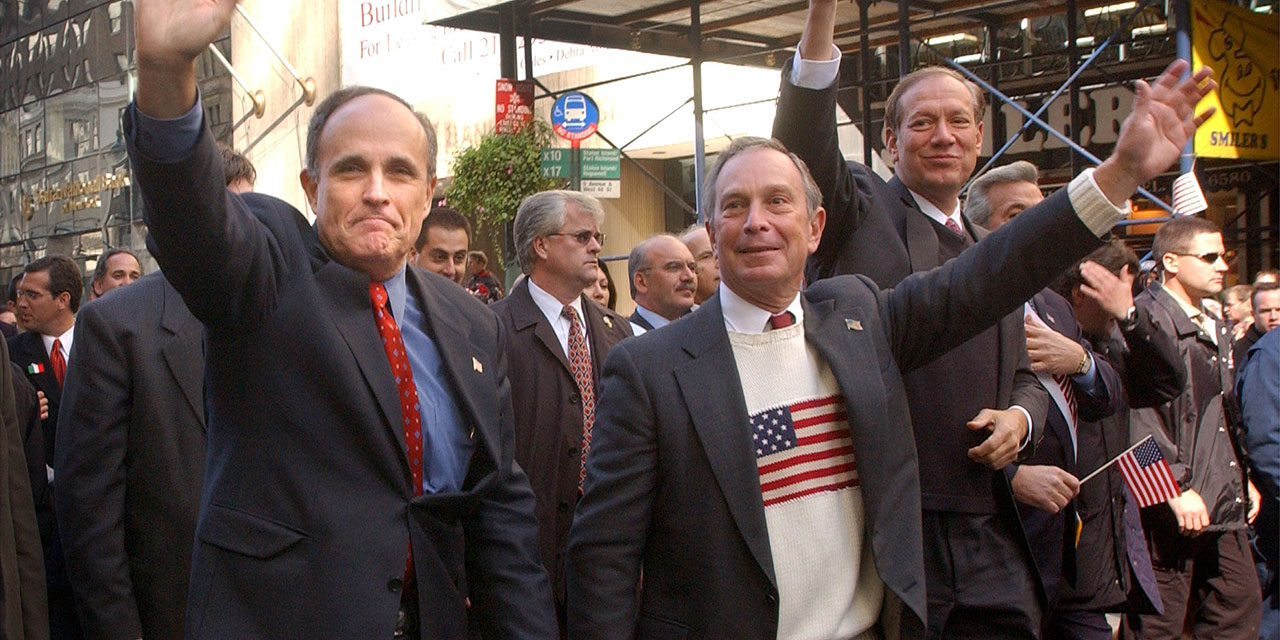
Before Elon Musk and DOGE, there was New York City mayor Michael Bloomberg and the city’s Geek Squad. Bloomberg, who built his fortune on a groundbreaking financial analytics company, brought a data-driven mindset to City Hall. He assembled a team of mostly young, enthusiastic computer specialists to make government more efficient and improve New Yorkers’ quality of life through the smart use of data. Their efforts built on the prior administration of Rudy Giuliani and its CompStat program, which used crime pattern analysis to help police bring order to city streets. Together, these two administrations championed innovations that emphasized results, accountability, and metrics—transforming what had once been called the “ungovernable city” into one of America’s safest and best-managed urban centers.
Those days now feel like a distant memory. Over three mayoral terms—two under Bill de Blasio and one under Eric Adams—New York has endured an era of poor governance marked by unsound budgeting, a diminished focus on quality-of-life issues, and a lack of accountability in city agencies and spending programs. Increasingly, New York feels like a city that no longer works—for residents, businesses, or visitors. Whoever leads Gotham over the next four years must restore the principles of the old Geek Squad—committing to measurable improvements, effective programs, and spending that delivers results.
Finally, a reason to check your email.
Sign up for our free newsletter today.
Though Giuliani and Bloomberg were very different personalities, they shared one crucial trait that shaped their governance: both were political outsiders who had never held elected office before becoming mayor. That gave them independence from the city’s political class as they built their administrations.
As a Republican, Giuliani demonstrated that independence by reaching across the aisle to appoint notable Democrats, including Parks Commissioner Henry Stern and Corporation Counsel Paul Crotty. Most significantly, he chose lifelong Democrat William J. Bratton to lead the NYPD after Bratton had proven his crime-fighting chops as head of the Transit Police.
Bloomberg, who ran as a Republican, similarly opted for nonpolitical appointments, tapping investment banker Daniel Doctoroff as his head of economic development and the executive director of the Metropolitan Transportation Authority, Marc Shaw, as his budget director. Asked about whether he would use diversity to guide his selection process, Bloomberg responded, “I am not looking at race, ethnicity, gender, whatever.”
If a template for good local governance exists, it’s Bratton’s reorganization of the NYPD during Giuliani’s early years as mayor. One of Bratton’s key reforms was devolving decision-making to the community level—empowering precinct commanders, who best understood local conditions, to lead crime-fighting efforts. To ensure accountability, the department began collecting weekly crime data and gradually developed sophisticated methods for tracking and mapping crime across the city. What emerged was CompStat, a database that not only told Bratton and his top brass which precinct commanders were doing the best job but also revealed crime patterns that had previously gone undetected, allowing the city to respond far more effectively.
The success of CompStat was so striking that, late in his administration, Giuliani and his deputy mayors began exploring how to apply the model to other government functions, using data to measure and address problems beyond crime, especially quality-of-life issues. Shortly after taking office, Bloomberg built on this idea by adopting a customer service approach to government. One of his early innovations was the 311-phone line, a non-emergency counterpart to 911 that let residents report quality-of-life concerns, from noise complaints to dirty streets.
Like CompStat, the new phone service gave City Hall a wealth of data on conditions in communities across New York. With his background in computing services, Bloomberg saw that the city needed to capitalize on this new knowledge. His solution: the so-called Geek Squad, officially known as the Office of Policy and Strategic Planning. Under a former city prosecutor—originally retained to analyze the impact of mortgage-backed securities on the local economy—the office recruited eager young techies, even advertising on Craigslist. One was a music major; another, a fantasy baseball expert. They dug into data to help the city do everything from tracking the location of downed trees after big storms to improving its process for issuing small-business licenses to mapping noise complaints by neighborhood.
The administrative philosophy that yielded innovations like CompStat and the Geek Squad was also evident in budgeting during the Giuliani and Bloomberg years. The clearest expression of that philosophy at work was the Program to Eliminate the Gap, or PEG. The program required department heads in every budget cycle through both administrations to find savings somewhere, regardless of revenues. Many of the savings were modest, but their cumulative impact was enormous. Under Giuliani, for example, the administration kept a lid on the size of the city workforce, even as the population rebounded. Though the city added some 700,000 residents in that time, the number of workers remained largely unchanged.
Much of that governing discipline has vanished in recent years. Bill de Blasio succeeded Bloomberg with a philosophy that rejected his predecessor’s approach—expanding city services and rewarding political allies in public-sector unions with larger contracts and more hires. He launched major but largely untested programs like universal pre-K and expanded mental-health services, which ballooned the budget and added roughly 35,000 workers to the city payroll in just eight years. De Blasio also abandoned PEG, instead allowing departments to seek efficiencies voluntarily. The result: budgets swelled. Education spending alone rose from $18.7 billion in 2014 to $31.3 billion in his final budget.
At the same time, the sustained focus on quality of life that defined the prior two decades of city governance faded, even as crime rose and noise and other disturbances became more common. More than 20 years of population growth came to a halt after the Covid-19 lockdowns, with the city losing roughly 400,000 residents over four years. A 2021 Manhattan Institute survey found that more than half of all residents felt city services weren’t worth what they paid in local taxes.
De Blasio’s successor, Eric Adams, has faced a budget emergency from the start of his tenure. He has somewhat curbed the city’s workforce growth, cutting about 15,000 of the jobs added under de Blasio. But crime has remained high, while police funding as a percentage of the city budget has shrunk, crowded out by rising spending on education and social services. The Citizens Budget Commission, a fiscal watchdog, has criticized the city’s performance reports for concentrating on what the city is doing—what it’s spending money on—rather than whether it is accomplishing anything. Meantime, Adams has appointed some long-time political allies to key roles, some of whom have sparked controversy for their roles in political scandals, undermining the idea of a government run by qualified professionals focused on efficiency and quality of life.
The staffing of a city administration reflects the agenda and priorities of its elected leader. For five mayoral terms over 20 years, New York focused on programs that aimed to improve quality of life in measurable ways. The results were clear: falling crime, revitalized commercial districts, hundreds of thousands of new jobs, and nearly 1 million additional residents—a dramatic turnaround after decades of stagnation. That period also included, perhaps most remarkably, the city’s swift and exceptional recovery from the 9/11 attacks. More recently, however, City Hall’s priorities have shifted toward questionable and often unaccountable spending on dubiously effective programs, even as it has de-emphasized basic functions like maintaining public order.
We know what worked—and what didn’t. The next administration needs a playbook grounded in that reality.
Photo by Spencer Platt/Getty Images
Source link













